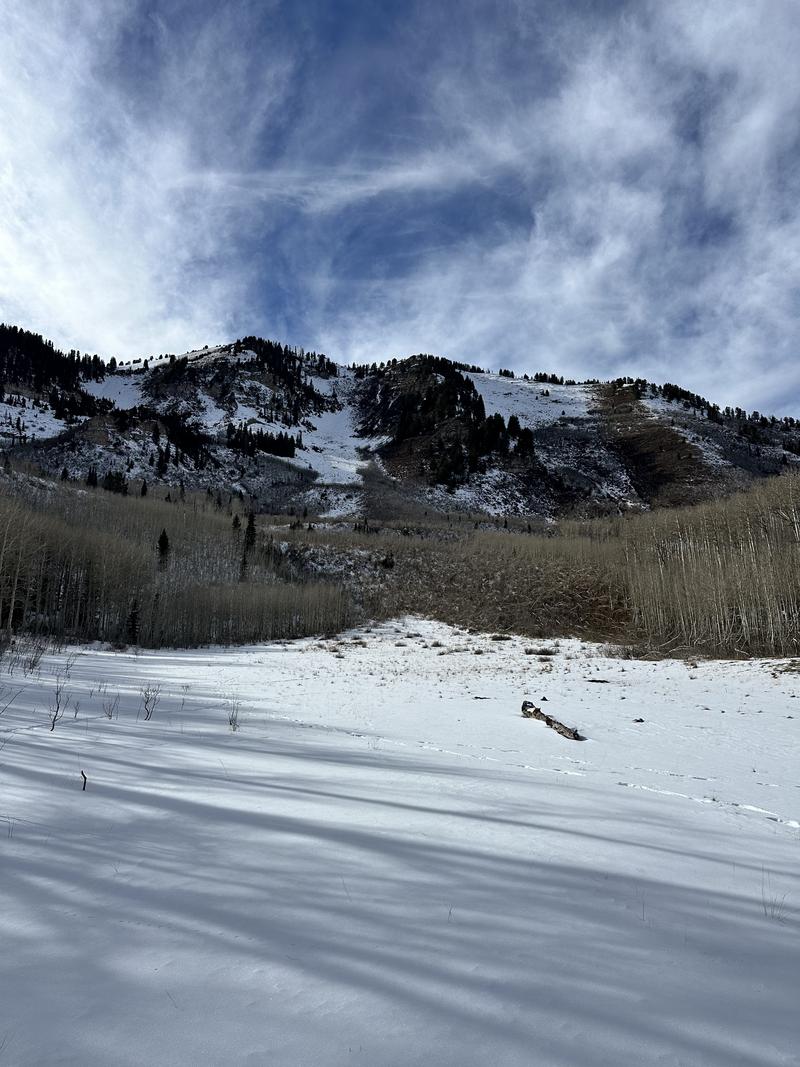Continued incremental loading (more snow and water) has started to sneak up on us and the places that are holding the most snow (upper elevation northerly facing aspects) are the places that are most suspect right now. Dig down on any slope you intend to travel on to see if there is a slab of new or wind loaded snow with soft weak snow underneath before committing to ascend or descend a slope over 30° degrees. I still think the biggest concern is the summer surface and I am still sticking to lower angle ridges and slopes where I can't get enough speed to hit a rock or stump just under the surface. Some avalanche problems you may want to keep on your radar:
- New Snow - The new snow may not bond well to the different crusts and weak faceted snow in our shallow snowpack. There will be a potential for sluffing and even shallow soft slabs of storm snow, especially during any period of higher precipitation
- Wind-Drifted Snow - Blowing winds will cause snow to drift at the upper elevations. Watch for signs such as cracking in fresh wind slabs. Although these drifts should be small, you will want to avoid getting caught in one in steep, consequential terrain










